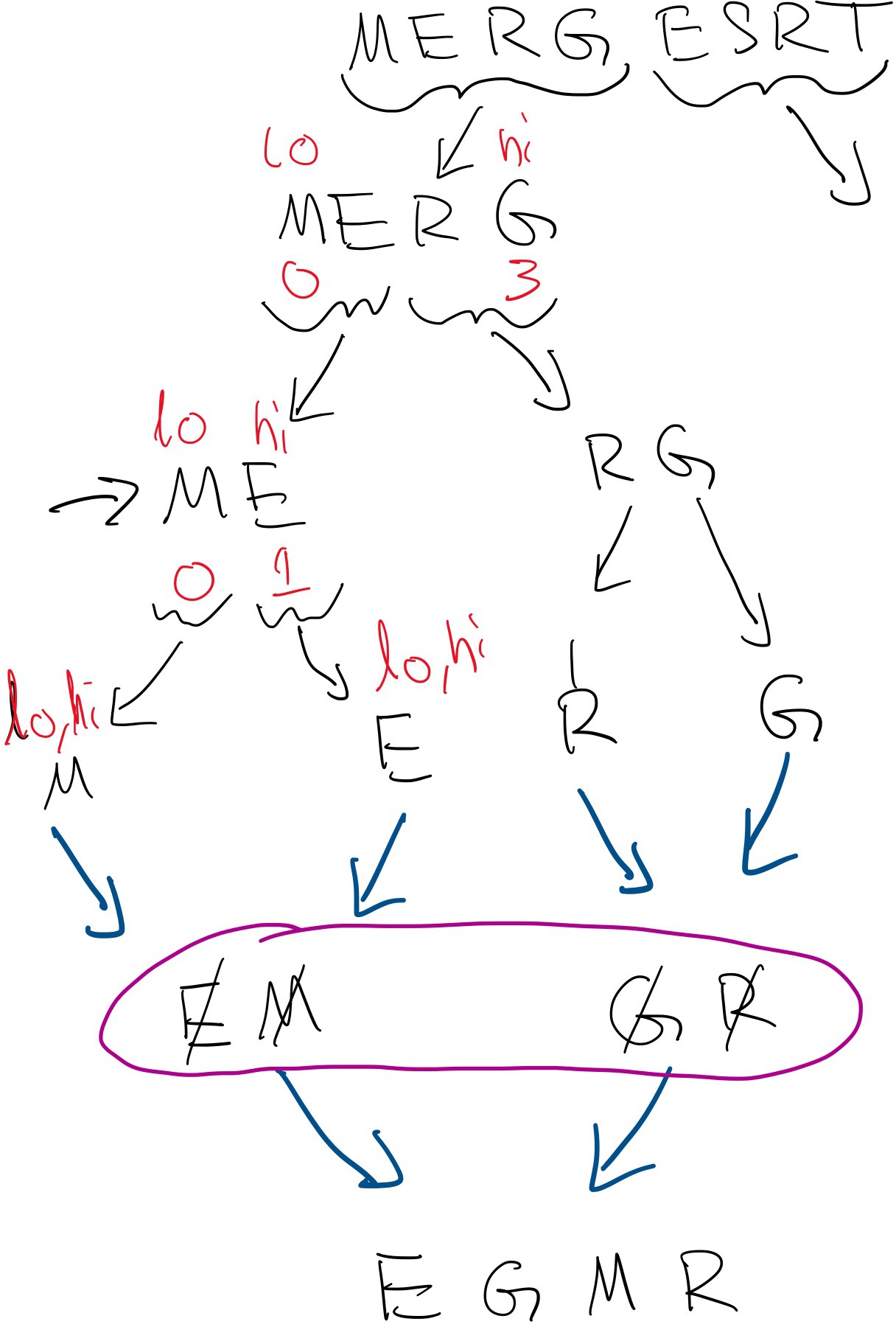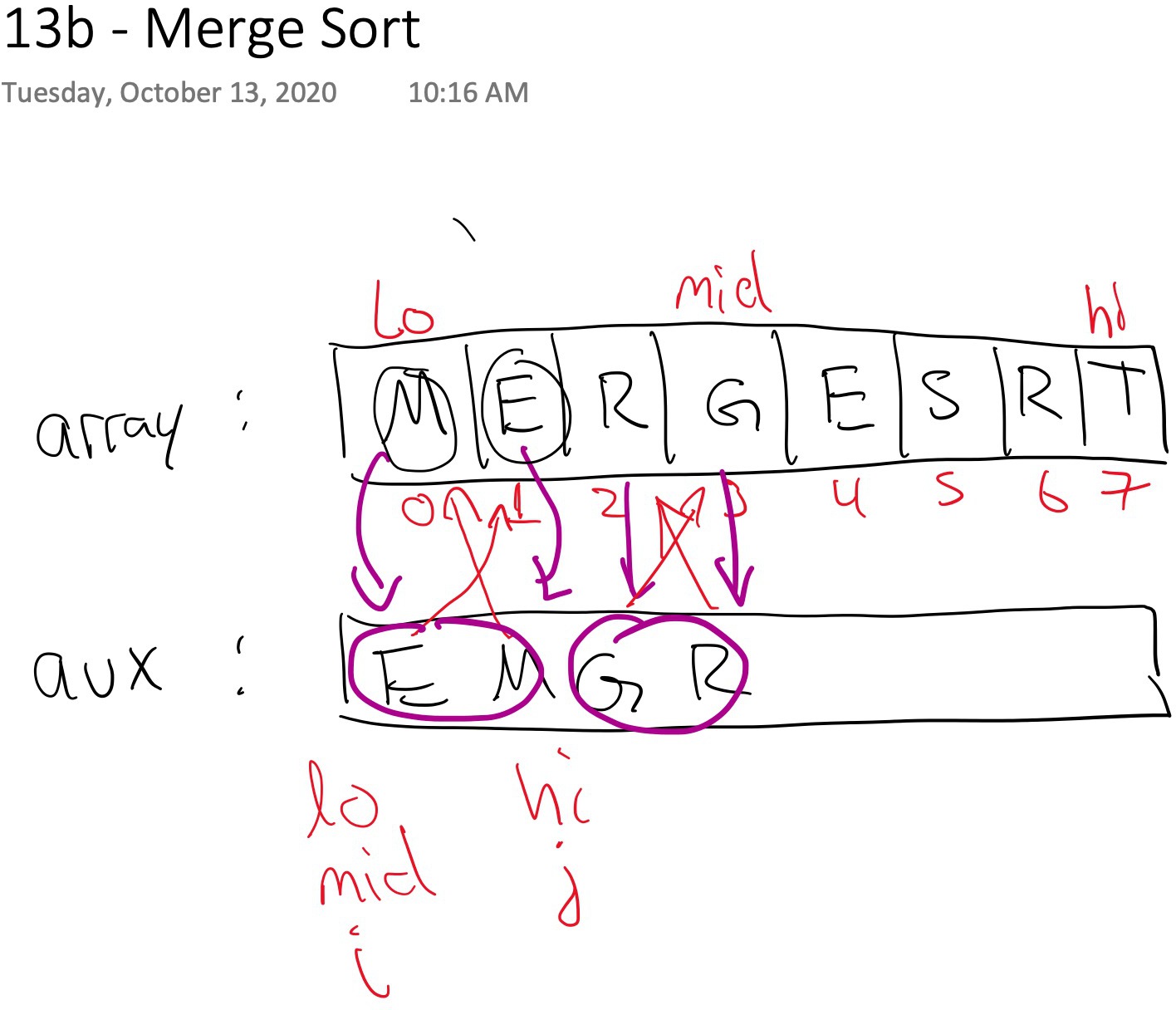**MergeSort**
*Thu Oct 6*
# Git
~~~sh
# Always start with a git pull
git pull
~~~
# Notes
A quick note about [What's the reason I can't create generic array types in Java?](https://stackoverflow.com/questions/2927391/whats-the-reason-i-cant-create-generic-array-types-in-java).
# Merge
[Link to Code](https://github.com/pomonacs622020fa/LectureCode/tree/master/MergeSort)


Questions:
- How many comparisons are made?
+ Answer:
* Worst-case: $n-1$
* Best-case: $\frac{n}{2}$
Consider these examples:
1. Merging [1, 2, 3] with [4, 5, 6]
+ Comparisons: (1, 4), (2, 4), (3, 4)
1. Merging [1, 3, 5] with [2, 4, 6]
+ Comparisons: (1, 2), (3, 2), (3, 4), (5, 4), (5, 6)
# MergeSort


Questions:
- How many comparisons are made?
+ Answer: $T(n) = 2T(\frac{n}{2}) + (n-1) = O(n lg(n))$
- How many moves are made?
+ Answer: $T(n) = 2T(\frac{n}{2}) + (n-1) = O(n lg(n))$
- Is it in-place or not?
+ Answer: Not in-place
- How much extra memory is used?
+ Answer: $O(n)$
- Is it stable or not?
+ Answer: Stable
# Walk-Through
Here is a video and corresponding diagrams from a walk-through of the MergeSort algorithm.


# Running Time
